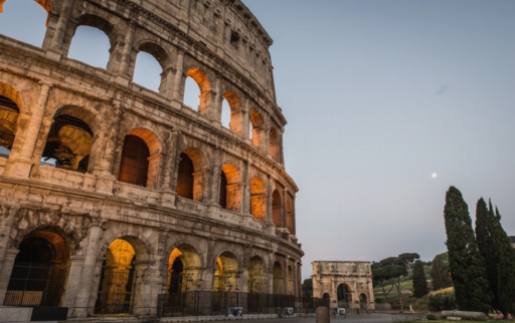The Pantheon stands as a testament to the incredible ingenuity and artistry of ancient Roman civilization. This architectural masterpiece, renowned for its striking dome and innovative design, has captivated visitors for centuries. Explore the fascinating history and engineering marvels of the Pantheon in this article.

The Architecture of the Pantheon: A Blend of Greek and Roman Styles
The Pantheon stands as a testament to the architectural prowess of ancient Rome, showcasing a unique blend of Greek and Roman styles. The exterior of the Pantheon is reminiscent of traditional Roman temple architecture, with its grand portico supported by Corinthian columns. However, the influence of Greek design is evident in the building's overall symmetry and proportion.
Upon entering the Pantheon, visitors are greeted by a vast interior space that is both awe-inspiring and harmonious. The space is divided into a central rotunda and a series of interconnected chambers, creating a sense of unity and balance that is characteristic of Greek architecture. The use of natural light through the oculus at the apex of the dome further enhances the beauty and grandeur of the space.
The Pantheon's architectural fusion of Greek and Roman styles served as a template for later buildings, influencing the development of Neoclassical architecture in the 18th and 19th centuries. Its enduring appeal lies in its ability to seamlessly blend two distinct architectural traditions, creating a structure that is both monumental and graceful in its design.
The Dome of the Pantheon: An Architectural Marvel of Ancient Rome
The dome of the Pantheon is considered to be one of the greatest architectural marvels of ancient Rome. Built in the 2nd century AD, the Pantheon's dome is still the largest unreinforced concrete dome in the world to this day. The sheer size and scale of the dome, measuring 43 meters in diameter, is a testament to the ingenuity and skill of Roman engineers.
The construction of the dome was a remarkable feat of engineering. The use of concrete, a material invented by the Romans, allowed for the creation of large, monolithic structures such as the Pantheon's dome. The dome's design also featured a series of decreasing coffers, or recessed panels, which not only reduced the weight of the dome but also added to its visual appeal.
The oculus, or opening at the top of the dome, serves as both a functional and decorative element. Not only does it allow natural light to filter into the interior of the Pantheon, creating a dramatic play of light and shadow, but it also symbolizes the connection between the heavens and earth. The oculus is a stunning example of how Roman architects incorporated both practicality and symbolism into their designs.
The dome of the Pantheon has been a source of inspiration for architects throughout history. Its innovative use of concrete and sophisticated design elements have influenced countless buildings, from Renaissance churches to modern skyscrapers. The Pantheon's dome stands as a lasting testament to the skill and creativity of ancient Roman engineers and remains a must-see attraction for visitors to Rome.
The Oculus of the Pantheon: Engineering Feat or Divine Inspiration?
The Oculus of the Pantheon is a remarkable architectural feature that has captivated visitors for centuries. This large circular opening at the top of the dome allows natural light and even rain to enter the Pantheon, creating a unique and awe-inspiring atmosphere within the space. The engineering behind the Oculus is truly impressive, as the builders of the Pantheon were able to create such a large opening in the dome without compromising its structural integrity. Some have even speculated that the design of the Oculus was inspired by divine guidance, as its proportions and placement seem almost too perfect to be purely the result of human ingenuity. Whether it was a feat of engineering or divine inspiration, the Oculus of the Pantheon continues to amaze and inspire visitors to this day.
The Pantheon's Influence on Later Architecture
Its iconic dome, considered a marvel of ancient Rome, has been replicated and admired in buildings around the world. The symmetrical design and use of concrete in the construction of the Pantheon have served as a blueprint for architects seeking to create structurally sound and visually stunning buildings. The oculus, or opening at the top of the dome, has inspired architects to incorporate natural light into their designs, creating spaces that feel open and connected to the sky. The Pantheon's blend of Greek and Roman styles has also influenced neoclassical architecture, with its emphasis on symmetry, proportion, and grandeur. In essence, the Pantheon has set a standard for architectural excellence that continues to inspire and captivate designers to this day.
